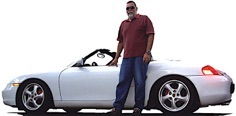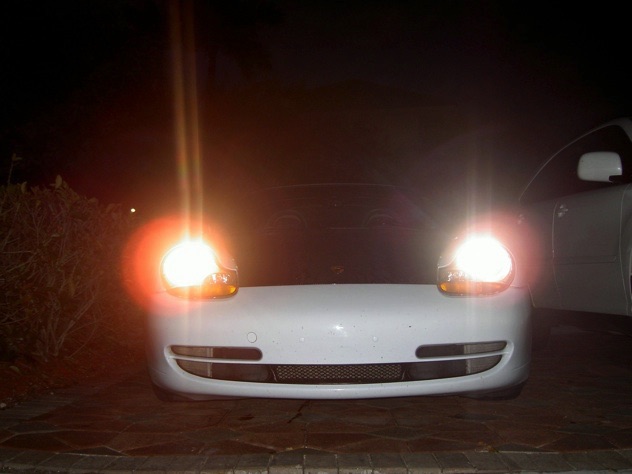

Published in the October 2012 issue of “Die Porsche Kassette”
A little history first.
The very first headlights were introduced in the early 1800s. Two common types were oil and acetylene lamps with a reflective mirror behind the flame and they were used on carriages.
The acetylene type quickly became more popular since they would stay lit in high wind conditions.
The first electric headlight was introduced in 1898 on the Columbia Electric Car from the Electric Vehicle Company. Peerless made electric headlights standard in 1908.
Around 1910, the Corning Glass Co. introduced the first lens-focused headlight.
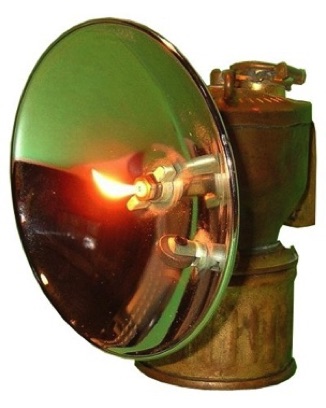
When “High” and “Low” beams were first introduced, it meant that the headlights were directed high or pointed low, literally and their positions were changed manually.
In 1912 Cadillac integrated their vehicle’s Delco electrical ignition and lighting system, creating the “modern” automotive electrical system.
Osram introduced dual filament high/low beam bulbs in 1924.
Between 1940 and 1983 sealed beam headlights were used. When the bulb burned out the whole unit was replaced. In 1983 composite headlights became available in which only the bulb needed replacing when it burned out.
The earlier electric bulbs used tungsten filaments in a vacuum. These were not very efficient and soon gave way to halogen lamps which use chlorine and iodine gas to make the tungsten element burn brighter, also using less energy.
in 1991, the BMW 7-series was the first car to have HID or High Intensity Discharge headlights.
HID, also known as Xenon or Litronics in our Porsches, use light bulbs filled with the inert gas xenon inside a high-quality quartz or tungsten glass tube. Two tungsten electrodes arc a powerful electric discharge which interacts with the gases that surrounds them vaporizing the metal salts present in the bulb, producing a plasma that emits very intense light.
In 2008, Lexus first introduced the next generation in automotive lights, LEDs as headlights. LEDs had already been in use as parking lights, turn signal, taillights and daytime running lights on some vehicles for several years. Light Emitting Diodes while currently expensive, offer several advantages. They illuminate 200 times faster than a comparable halogen bulb, and they are low heat producers since they don’t heat up an element to produce light. However, there is heat produced from the back of the lamp which requires the use of complex and expensive heat sinks.
The main disadvantage of LED is seen in cold weather, since LEDs will not melt ice or snow which has accumulated on the headlight. They are also temperature-sensitive, giving off different light levels depending on the ambient temperature.
If your Porsche didn’t come with Litronics (HID) and you’d like to benefit from the advantage of having brighter roads ahead, you can easily convert your headlights to Xenon HIDs by installing a simple kit.
HID bulbs come in the same type base as your halogen bulbs therefore there’s no need to modify the headlight itself.
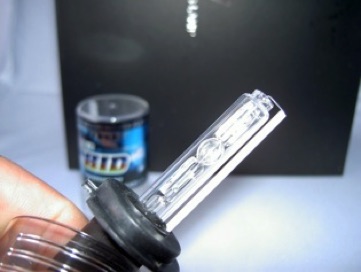
Aside from the fact that you will get whiter (daylight) and brighter light, there is a lot less heat generated by the HID bulb which wont burn or turn yellow the inside of your headlight.
Below I installed an HID kit on the driver’s side headlight (on your right) while leaving the passenger side the original halogen bulb for comparison.
You can see the difference in brightness and color, but also notice the difference in the temperature measured with a LASER thermometer below.
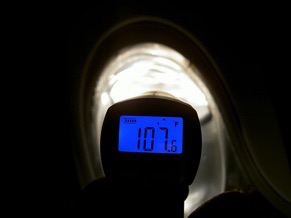
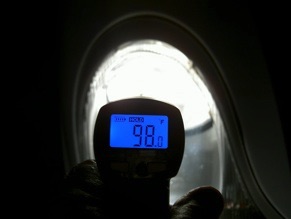
Newer model Porsches also include LED DRL (Daytime Running Lighs) which make you more visible to traffic, and have been shown to reduce accidents.
You can also add LED DRLs easily to your car with another simple kit.
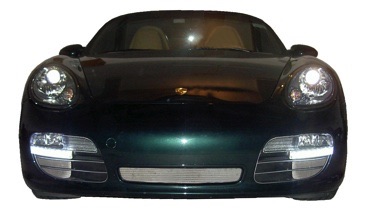
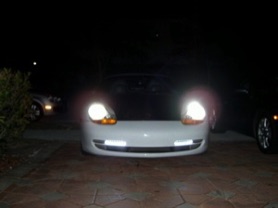
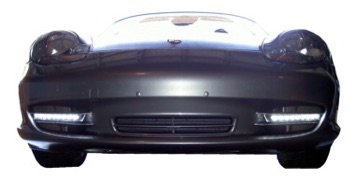
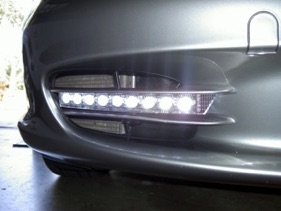
So, as you can plainly see, there can be a brighter future ahead if you upgrade your halogen headlights and take advantage of these new automotive lighting technologies: HID and LED.
To learn more on automotive lighting, upgrade kits and more, please visit my website at: www.PedrosGarage.com
Happy Porscheing,
Ⓒ2012 Technolab / PedrosGarage.com

